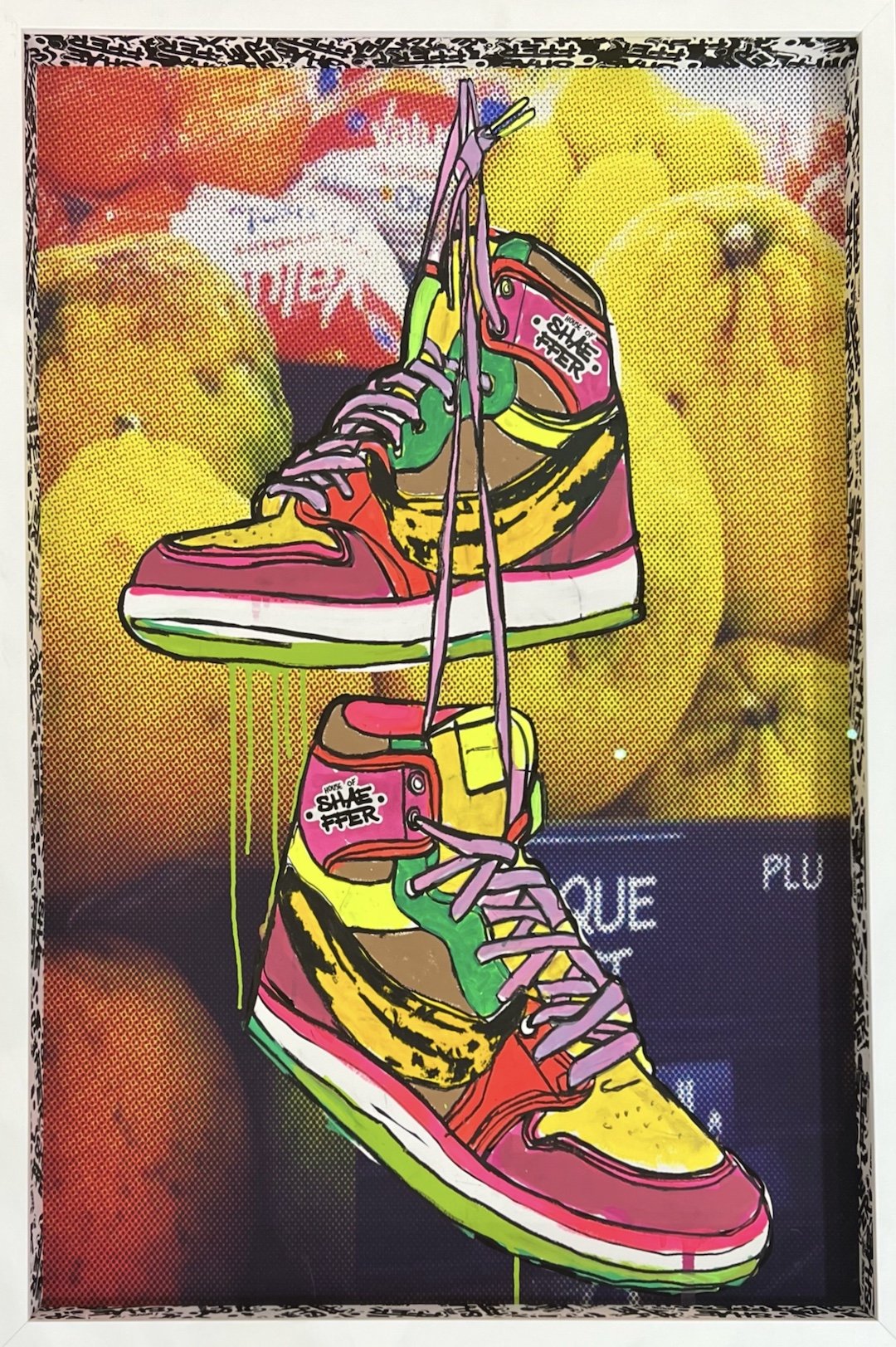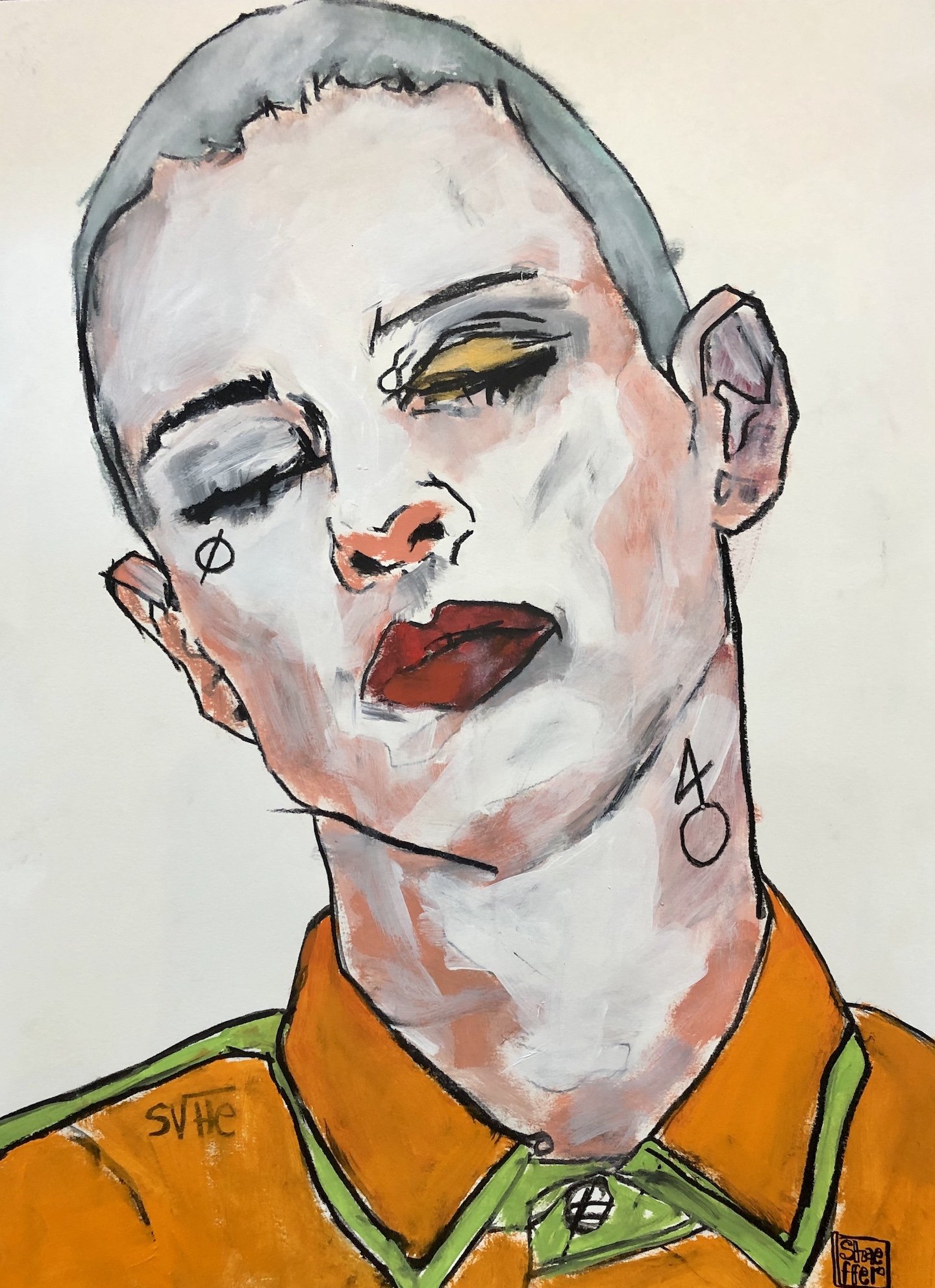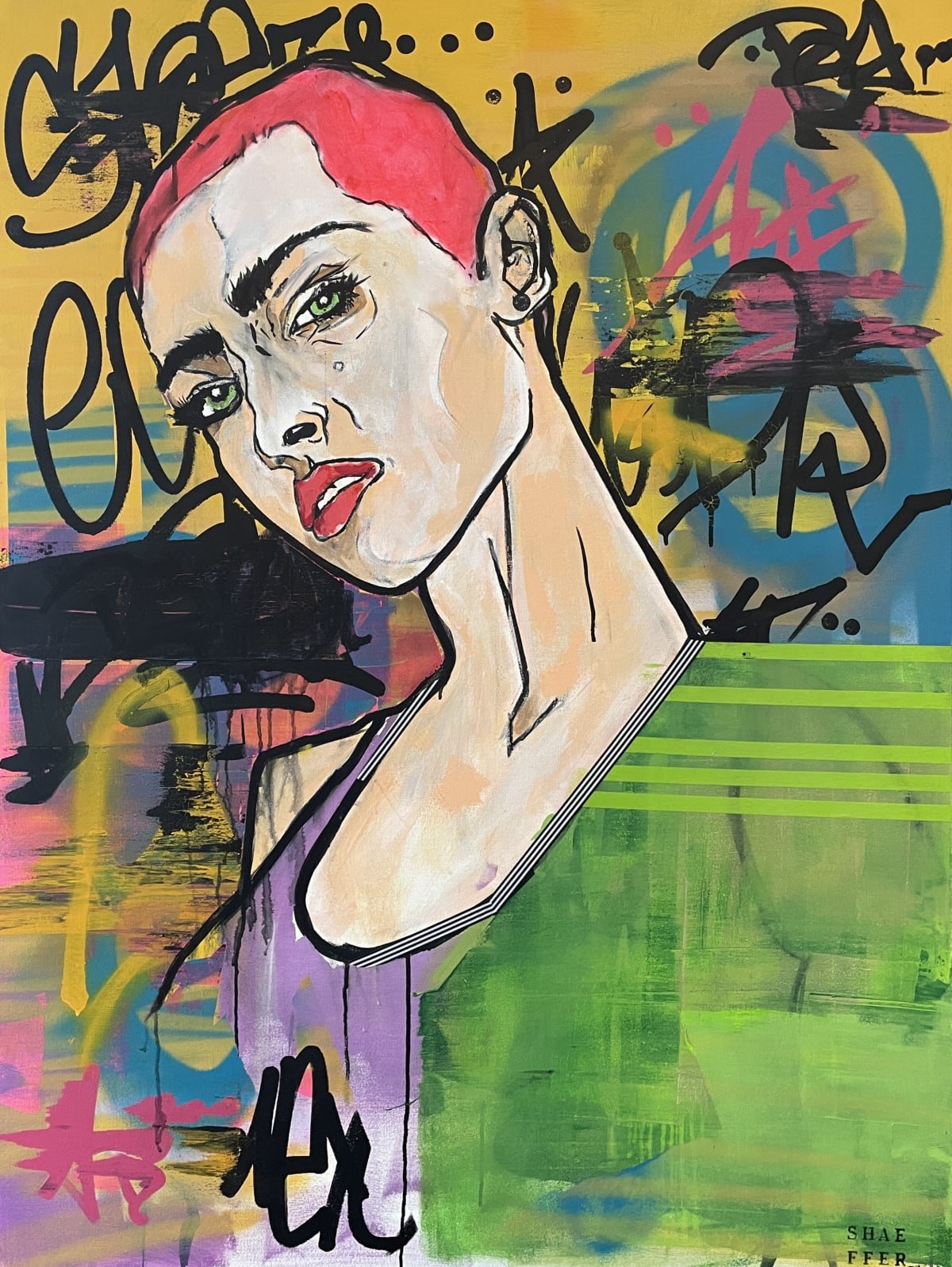Interview with artist Michael Shaeffer
Michael Shaeffer spent his childhood in Long Island, New York but attended high school in Hot Springs and now lives in Little Rock. After graduation, Michael eventually went back to New York to attend the School of Visual Arts in Manhattan. The influences of the New York subculture are evident in his stylized portraits and pop imagery. More of Michael’s work can be seen at M2 Gallery in Little Rock and at his Instagram.
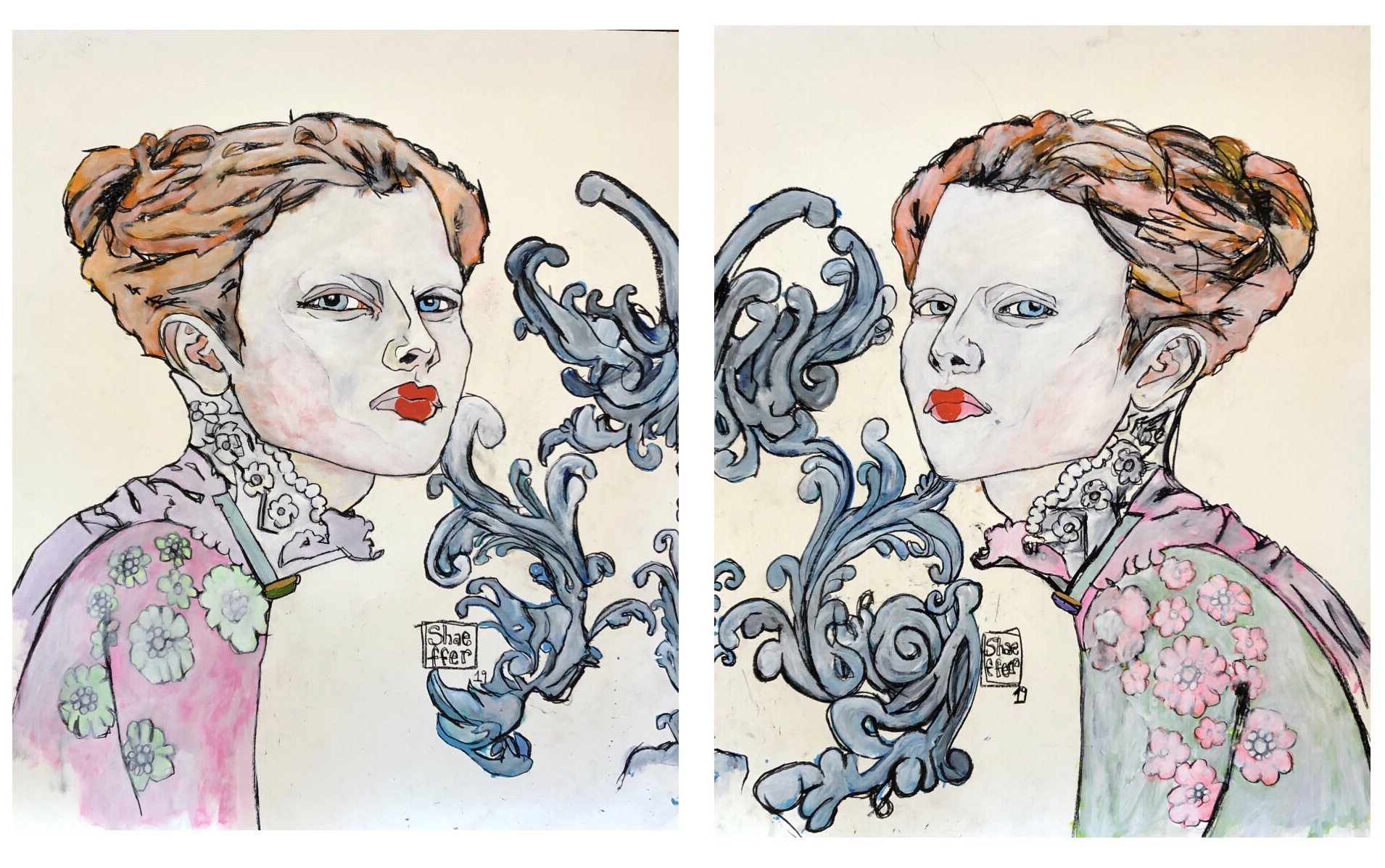
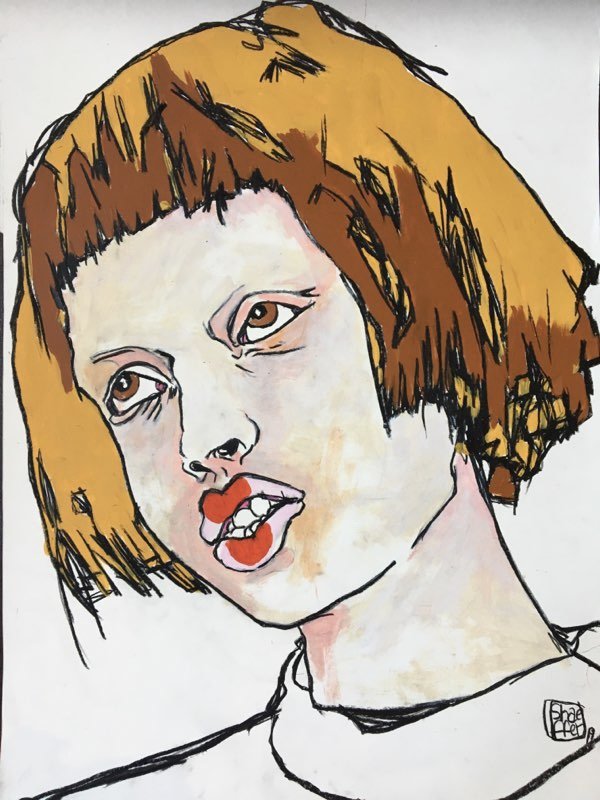
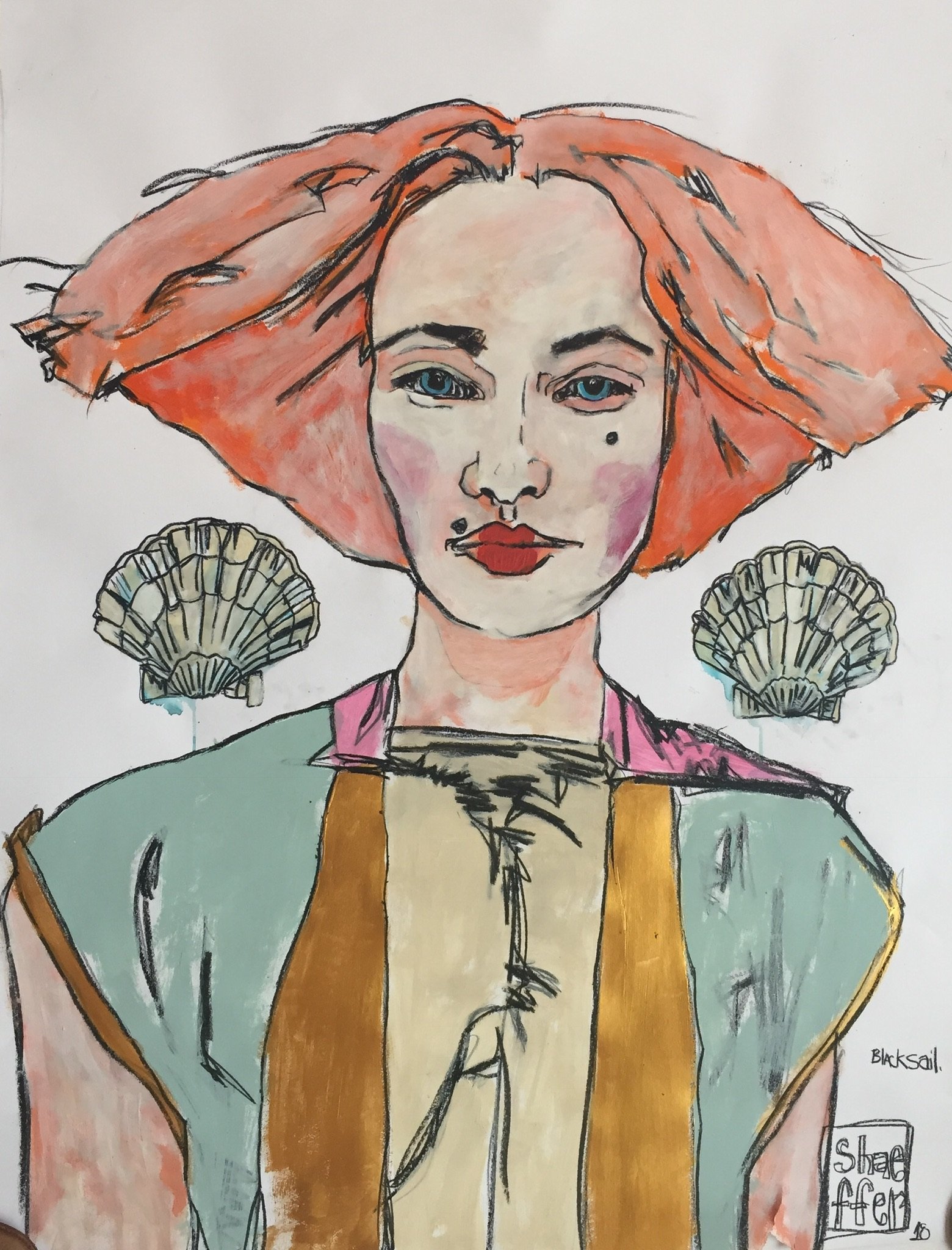
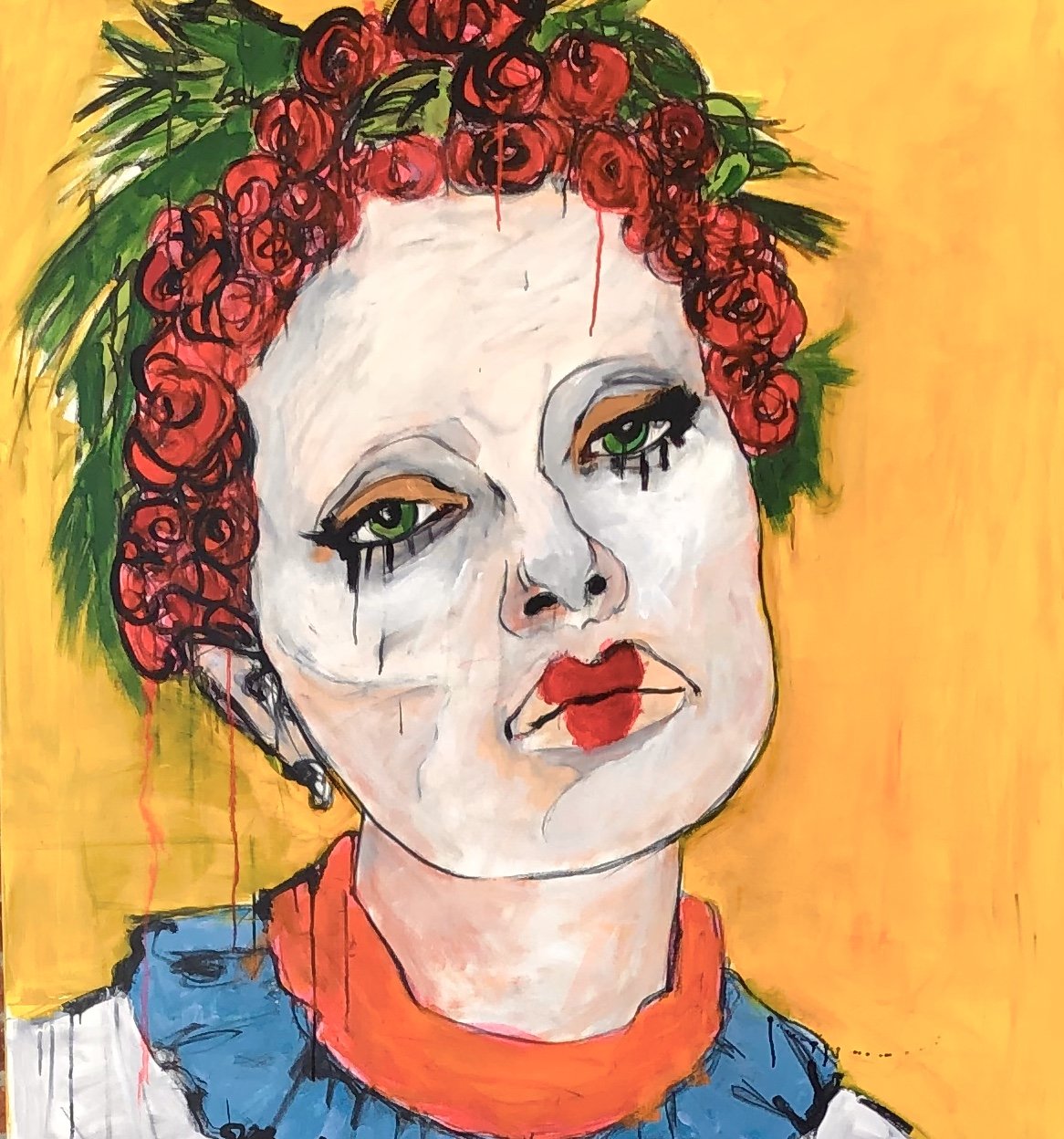
AAS: Michael, I believe you are originally from New York. How did you end up in Arkansas?
MS: I grew up on Long Island, then moved to Hot Springs my freshman year of high school. This was around 1994. Fortunately at the time, there was a strong art and music scene happening in Hot Springs. My high school art teacher, Lynda Lyon, was an instrumental figure in my development as an artist. She was not afraid to push her students’ artistic boundaries and strongly encouraged us to be our truest selves. After graduating high school, I was part of the artist residency program at the newly established Clinton Cultural Campus in Hot Springs. After a year of residency, I moved to Raleigh, North Carolina, where I worked with multiple art collectives. After a brief stint in Raleigh, I decided to return to New York where I attended the School of Visual Arts.
AAS: So, you studied both painting and graphic design? Did you always know you wanted to be a visual arts designer?
MS: While at SVA, I began the program as an illustration major. After about a year and a half, I decided I did not want to be an illustrator. I changed to a fine arts major, where I was flung into a variety of courses such as video installation, site specific works, and curatorial studies. That decision changed the way I thought about making art.
AAS: Do you remember the first thing you drew as a kid and thought “That’s pretty good. I want to keep doing this.”?
MS: When I was in third grade, I drew a picture on my notebook of Sid Vicious with large, block letters shouting, "SEX PISTOLS." I was sent home from school that day. I didn't quite understand why I was sent home, but I think that was the day I realized the power of art. Punk Rock, Hip-Hop, Graffiti, Skateboard Culture - these are all things that still influence who I am as an artist.
AAS: I want to ask you first about Cry Wolf. It is a fascinating image. I see it as a commentary on couture – somewhat irreverent maybe? Tell me about it.
Cry Wolf, 40” x 30”, mixed media on canvas
MS: This was the first piece Milkdadd and I collaborated on for our Joyride series. For this collaboration, we each exchanged 10 unfinished digital illustrations (she gave me 10, and I gave her 10). The images were then printed as 30” x 40” archival prints. The idea was for us to complete one another's work, an exercise in reacting to another artist's marks. In this particular piece, Milkdadd gave me a digital version of a pencil outline of a figure with flowers laid in. I started with the sleeves using a Louis Vuitton stencil to break in with something that wasn't line-based. She and I both use quite a bit of fashion imagery in our work, so the stencil seemed like an obvious choice for me to break into this series.
AAS: Is it fair to say that most of your work combines multiple elements – underpaintings drawings, and other graphic elements?
MS: Recently I've been including some digital elements to my work. The Joyride series with Milkdadd really pushed me to play more with the possibilities of digital images, adding altered photos as a backdrop. However, the evidence of the human hand is very important to me as an artist. I typically start most pieces as a sketch on my iPad, then translate that sketch to either canvas or paper. From there I'll use anything from acrylic to aerosol. My weapon of choice is a china marker. Destruction is a major part of my process, I often rework a piece multiple times during the same session, which is a layer within itself.
AAS: You have done some striking figures. I don’t know if they are of actual people, but often they are somewhat androgynous. Occasional Magic is one of my favorites. Tell me about your portraits.
Occasional Magic, 48” x 36”, mixed media on canvas
MS: To be completely honest, my portrait work is Frankensteined. They're just cherry-picked features from found images of all genders. Because of this, my figures lean towards androgyny. However, I've been heavily influenced since I can remember by subcultures like glam rock, punk, the New Romantics, and club scenes - all of which embraced a more androgynous look. In my portraits I confront this idea of personal identity and social status in American counterculture in the hopes of possibly obtaining a better understanding of myself I suppose.
AAS: You have exhibited your work back in New York as well as Arkansas. Do you get different reactions to your work in the northeast versus the south?
MS: The work I was showing while in New York was typically either student based or DIY exhibitions. I was also creating work to be displayed as more aesthetic ambiance inside boutiques in Brooklyn. Being an artist in New York, I was one of, let's say, 200,000 emerging artists. The audience at these shows were majorly made up of peers. Selling work was not the main focus, and at the time – it was all about exposure. Fast forward 15 years, I am now represented by the largest gallery in Arkansas, M2 Gallery. The audience has now changed to art collectors and enthusiasts (and some peers!). I don't think there's really any difference between viewership based in NY vs. AR - anyone could be excited or repulsed by my work regardless of their zip code. The major difference here is that I've had 15 years between the 2 cities to refine my craft and build a following. Arkansas has been good to me by allowing me to make a living doing something I love.
AAS: Tell me about The Revolution Got Sold. It has quite a different look from your other work.
The Revolution Got Sold, 68” x 68”, mixed media and aerosol
MS: This painting is from my latest series, The Revolution Got Sold. The sum of my work is personal identity in our culture, and the basis of Graffiti Culture is personal identity. This piece speaks to corporate America's corruption and appropriation of an artistic movement that's technically illegal and against everything corporate America actually stands for. It's fine for a corporation to co-opt graffiti for the purpose of selling goods, meanwhile someone expressing themselves through graffiti on a building or train would be arrested. I wanted this body of work to touch on things I feel at one time were sacred or revolutionary, but now have become more mainstream or just pop culture. In this series I also included several portraits painted over images of natural disasters, war-torn neighborhoods, and protests taken from media outlets. To finish off the series, I created eight 32” x 24” drawings of t-shirts with iconic figures or movements, such as Frida Kahlo or Hip-Hop, etc. the paintings themselves are then framed with a “DIY” stencil of a Fashion House. I wanted to address the appropriation of these Icons by the fashion industry.
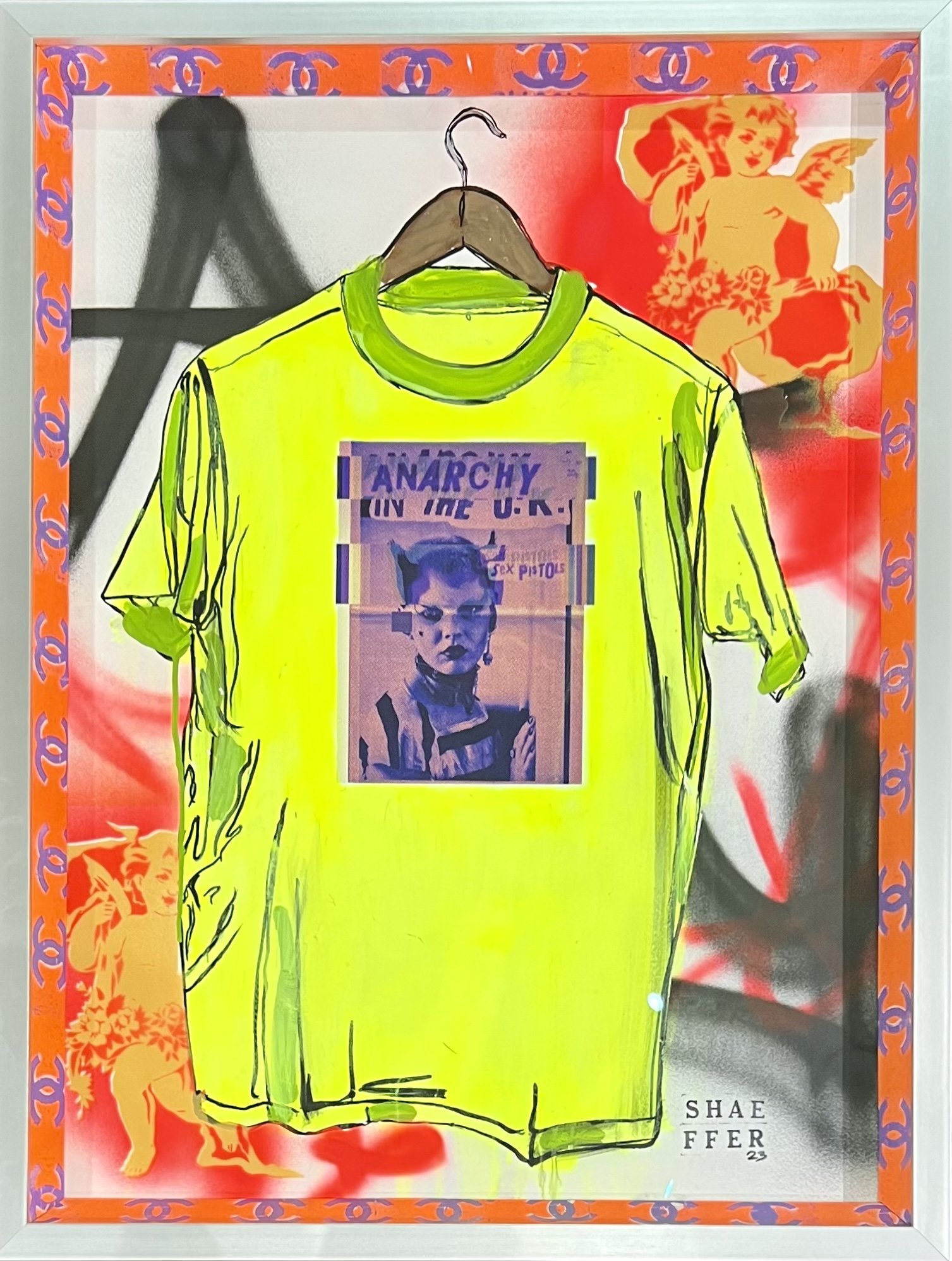
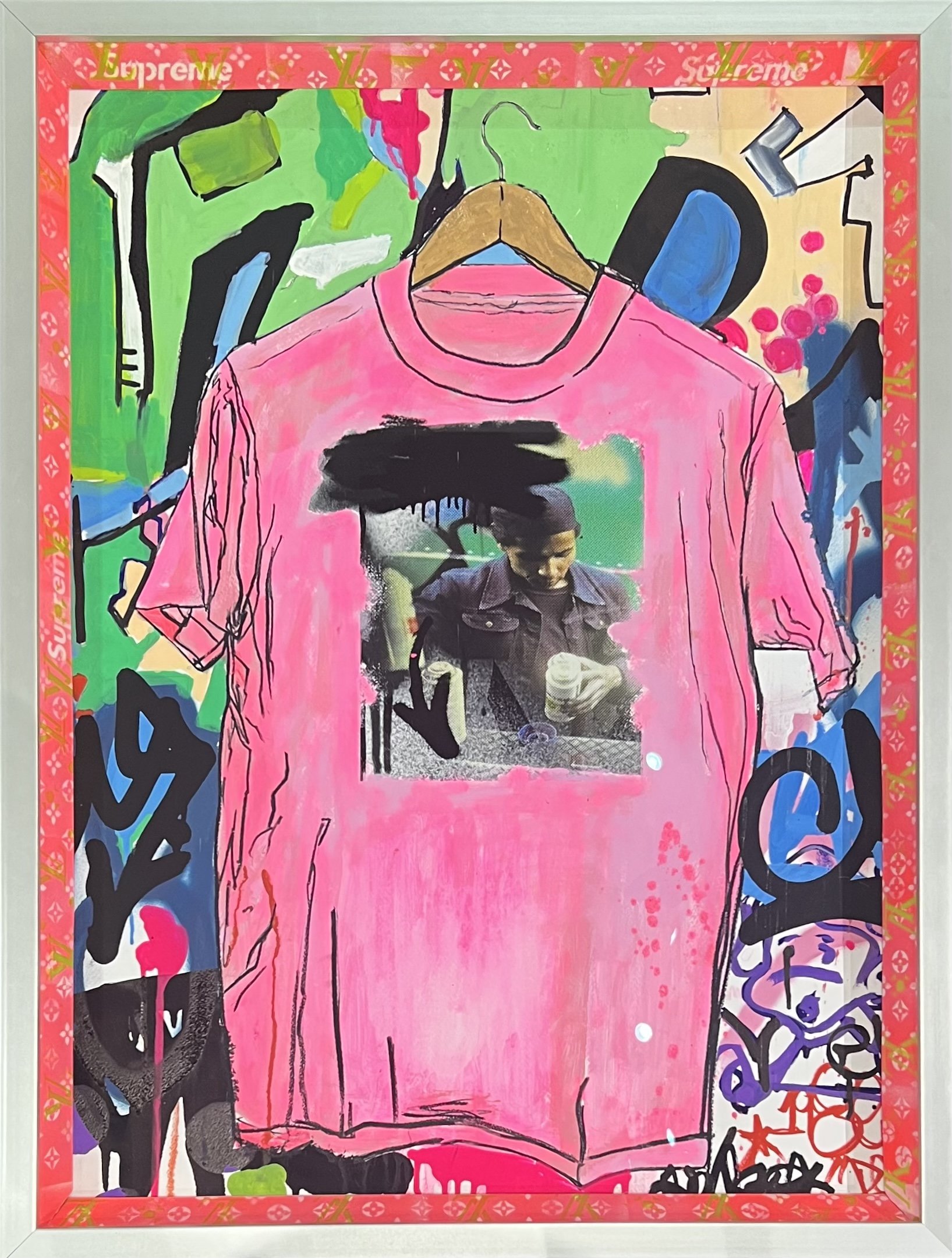
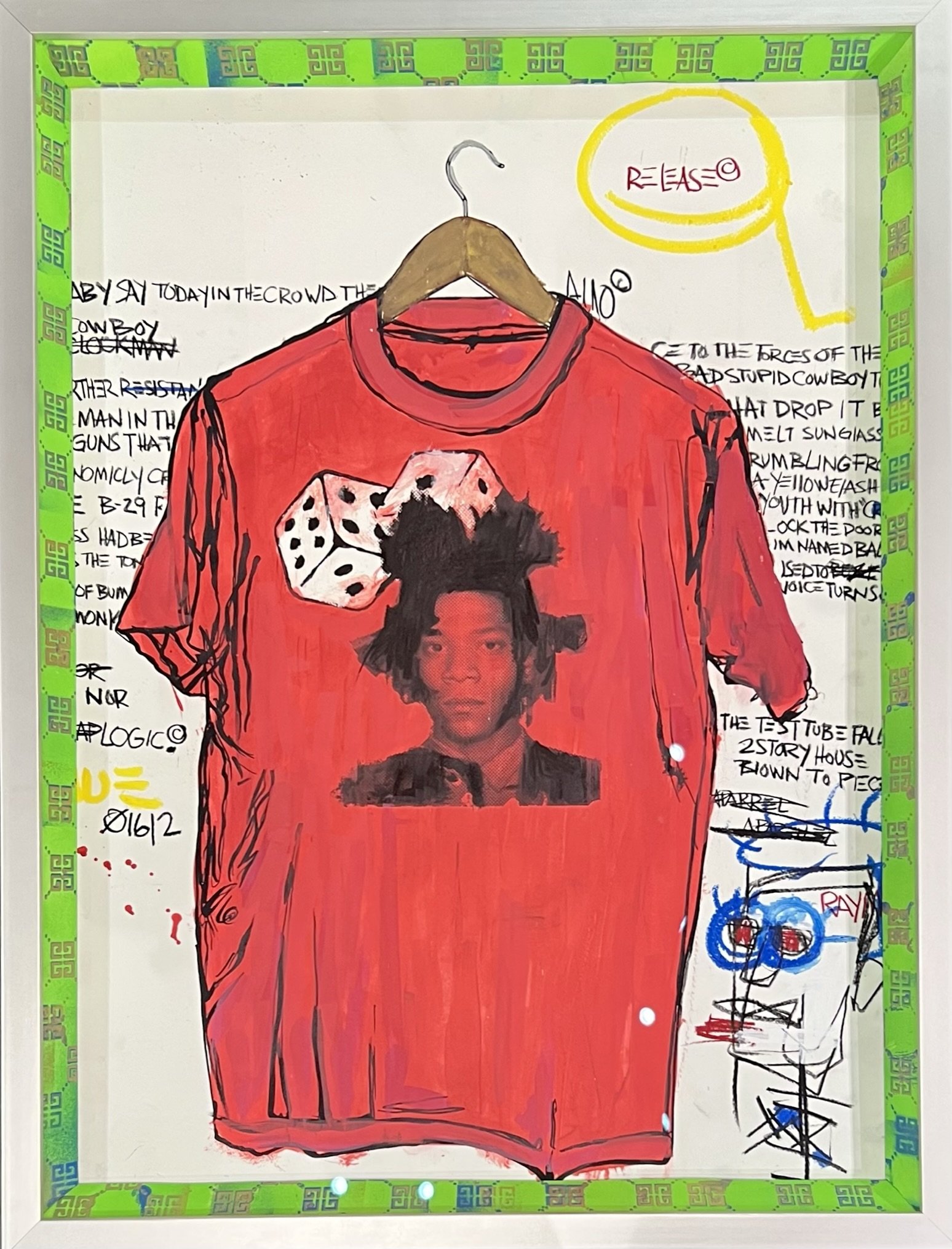
AAS: You have a fun series of pop art sneakers . Tell me about that series.
Birds on a Wire, 38” x 26”, mixed media
MS: Honestly, this series spawned from a conversation between my gallerist, Mac Murphy, and me. I had just completed a large body of portrait work that was showing at Arkansas Tech, and I was burned out on portraits. I told Mac that I wanted to break away from portraits for a bit and make some work that was more object-driven, something like a shoe. He and I talked about how sneakers are just another extension of one's personal brand and identity. I decided to use Warhol's banana in place of the swoosh, another layer of commentary on branding and status. Collecting shoes or collecting art - it's all about status. Personal identity and status are, to say the least, a common thread in my work. The first round of the image of the single shoe was titled Bananas Can’t Sue, the second round using the image of a pair of shoes, I went with Birds on a Wire. With Birds I began to play with the background more, including stencil work as well as photographic imagery. The series were much larger than I initially planned for. Between the two collections, there were 47 pieces created. It was a fun ride for sure.
Bananas Can’t Sue, 24” x 36” each, mixed media on canvas
AAS: You did a self-portrait that I guess embodies what your goals are for the House of Shaeffer?
Self-portrait, 54” x 38”, mixed media on canvas
MS: That piece is a funny one. Shortly after signing with M2, Mac told me they were asking artists to participate in a self-portrait show. I didn't want to pass, but I also felt no one wanted a picture of me. I created a portrait wearing a shirt with my face on it to fulfill his request. In hindsight, it completely falls in line with the concept behind House of Shaeffer. The artist as a brand. After years as a visual merchandiser for a major department store based here in Little Rock, where my job was to find ways to create excitement around brands, I decided to create a brand around me. An umbrella that could include any medium that I was interested in exploring at the time. A body of work or “collection” that represented me and what I was interested in. It would be constantly changing through subject and medium but would have an overall style that would be recognizable.

